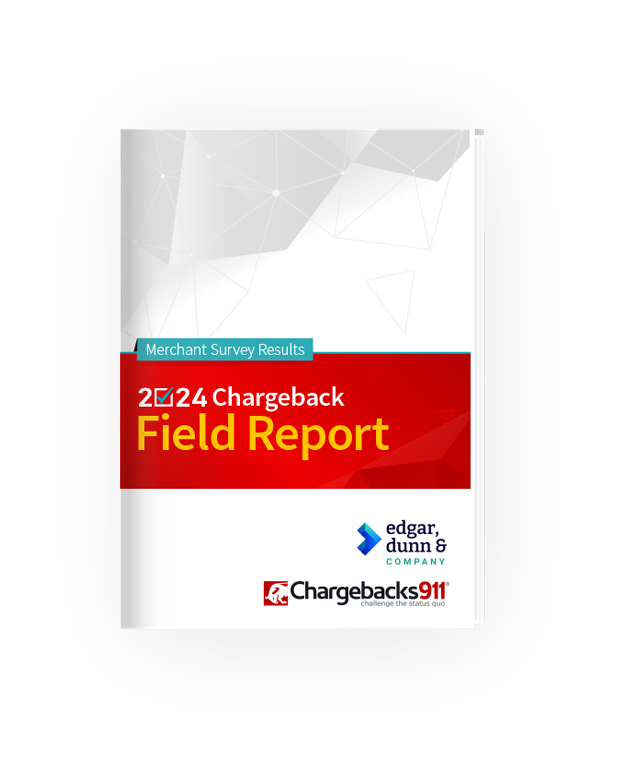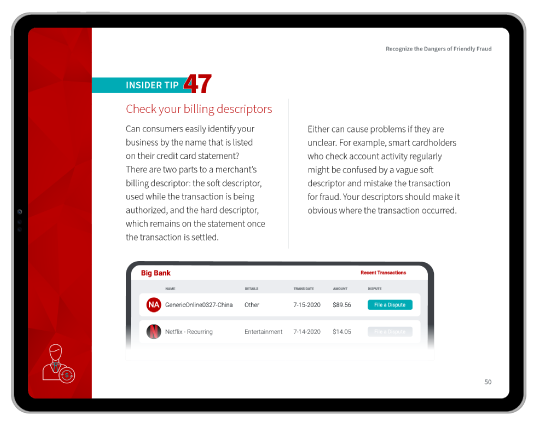Important Developments for Acquirers & Merchants: Major Updates for the Visa Acquirer Monitoring Program (VAMP)
Visa maintains strict monitoring on the number of chargebacks an acquirer and their merchants are allowed to receive each month.
As a merchant, this could mean incurring added fees and restrictions on your activities. If the problem remains persistent, your bank may be forced to freeze or terminate your bank account entirely.
At least, that was the way it worked.
However, with a recent overhaul of the Visa Acquirer Monitoring Program ( or “VAMP”), we will soon see changes which will simplify and evolve this process. This program update will transform the way both merchants and acquirers interact with the Visa risk ecosystem.
Recommended reading
- What is the Visa Arbitration Process for Chargebacks?
- Visa Chargeback Rules: Your “A-to-Z” Guide for Visa Disputes
- Visa Chargeback Time Limits: The 2025 Guide
- Spring 2025 Updates to Visa’s Merchant Fee Schedule
- Verifi Order Insight: Using Data to Block Visa Disputes
- Rapid Dispute Resolution: Avoiding Chargebacks With RDR
What is the Visa Acquirer Monitoring Program?
- Visa Acquirer Monitoring Program
The Visa Acquirer Monitoring Program (VAMP) is a consolidated initiative that tracks acquirer activity related to fraud and chargebacks. It leverages a transaction count-based metric and the Visa Account Attack Intelligence (VAAI) Score system to offer better risk-based enforcement and improved fraud coverage.
[noun]/ˈvē • zə ə • kwī • ər • ər • män • ə • dər • iNG • prō • ɡram/
Before going into the details of the program updates, it will be helpful to have a working knowledge of the Visa Acquirer Monitoring Program.
The VAMP is designed to help acquirers, their designated agents, and merchants maintain robust controls and oversight of risk. The ultimate aim is to protect the Visa brand from undesirable fraud and chargeback activity by deterring fraudulent and compromising business practices in the Visa ecosystem.
Each month, Visa will examine the performance of acquirers and their merchants. The card network will conduct a thorough review of non-fraud disputes filed on card-not-present transactions, as well as fraud incidents and enumeration performance. Visa will gauge performance conduct on the previous month's overall sales activity.
Visa aims to collaborate with acquirers to ensure the security of the payments environment. To this end, a Visa representative may reach out to discuss the program's performance, the remediation plan, and any relevant issues to assist acquirers.

What's Changing?
Visa phased out the Visa Fraud Monitoring Program (VFMP) and Visa Dispute Monitoring Program (VDMP) for merchants operating in most global regions as of April 2025. The Visa Acquirer Monitoring Program was enhanced to effectively replace these two programs.
Under former Visa rules, the program thresholds were as follows:
VDMP
| Program | Monthly Threshold |
| VDMP Early Warning | 0.65% chargeback ratio and 75 chargebacks |
| VDMP Standard | 0.9% chargeback ratio and 100 chargebacks |
| VDMP Excessive | 1.8% chargeback ratio and 1,000 chargebacks |
VFMP
| Program | Monthly Threshold |
| VFMP Early Warning | $50,000 and 0.65% of sales value |
| VFMP Standard | $75,000 and 0.9% of sales value |
| VFMP Excessive | $250,000 and 1.8% of sales value |
VAMP
| Program Level | Program Threshold |
| VAMP Card-Absent Dispute Threshold | 750 disputes and 1% dispute ratio |
| VAMP Card-Absent Fraud Threshold | $500,000 in card-absent fraud and 1% fraud-to-sales ratio |
The revised VAMP program features a new transaction count-based metric which counts reported fraud and disputes (both fraud and non-fraud). This will be accompanied by new criteria based on confirmed enumerated transactions, identified and confirmed by the Visa Account Attack Intelligence (VAAI) Score system, rather than Risk Operations Center (ROC)-blocked transactions.
Additionally, the Visa Acquirer Monitoring Program will transition from non-compliance, assessment-based enforcement to risk-based enforcement. This will provide greater flexibility for clients and accommodate varying levels of risk appetite.
What is Visa OneERS?
Another major change to come as a part of this update will be the introduction of the Visa’s OneERS technology.
OneERS is a new risk technology tool being introduced by Visa. It’s a case management apparatus that will allow Visa acquirers to independently monitor their portfolio performance. These acquirers can then automate key aspects of case management, with the goal being to improve operational efficiencies for all parties.
Visa will use OneERS to provide access to a performance tracking dashboard, enabling acquirers to understand the key drivers of their performance. They can then engage in more self-service management of cases.
OneERS is designed to be usable for all risk management services in the Visa ecosystem. The tool uses a Microsoft Dynamics interface and is accessible through Visa Online for ease of use.
Revised VAMP Program Thresholds & Enforcement Levels
An acquirer is identified as being in the Visa Acquirer Monitoring Program if they meet or exceed either the new fraud and disputes ratio, or the new enumeration ratio. These are calculated as follows:
In the table below, I’ve outlined the former program thresholds, as well as the new thresholds that took effect in April 2025, to make it easier to understand the changes taking place:
See the full version of the table| Acquirer Criteria | Former Program Design | Updated Program Design (Effective June 1, 2025) | ||||||
|---|---|---|---|---|---|---|---|---|
| Definition |
|
|
||||||
| Single Ratio | No change (The core program metric continues to be a single, count-based ratio, the VAMP ratio.) | |||||||
| Monthly Thresholds for Identification in Program | Early Warning | Above Standard | Excessive | Merchant Excessive | Early Warning | Above Standard | Excessive | Merchant Excessive |
| ≥ 20 bps to < 30bps | ≥ 30 bps to < 50bps | ≥ 50 bps | AP, Canada, CEMEA, Europe, U.S: ≥ 150 bps LAC: ≥ 90bps |
≥ 40 bps to < 50bps | ≥ 50 bps to < 70bps | ≥ 70 bps | AP, Canada, CEMEA, Europe, U.S: ≥ 220 bps1 LAC: ≥ 150bps |
|
| Minimum Count of Fraud & Disputes | 1,0002 | 1,5003 | ||||||
| Pre-Dispute Products | No change (Disputes resolved through pre-dispute resolution products are excluded.) | |||||||
| Fees | Fees are assessed on merchant volume exceeding monthly threshold of ≥ 30bps (if acquirer is identified in VAMP) | Fees are assessed on merchant volume exceeding monthly threshold of ≥ 50bps and VAMP count of ≥ 5 (if acquirer is identified in VAMP) | ||||||
| Per monthly count of fraud and disputes: USD 5/USD 10/USD 104 (no fees for Early Warning) |
Per monthly count of fraud and disputes: USD 4/USD 8/USD 85 (no fees for Early Warning) |
|||||||
| Grace Period | No change (Clients are eligible for a 90-day grace period for every 12 months they are not identified in the program.) | |||||||
- 1 Effective 1 April 2026 for the AP, Canada, Europe and U.S. regions, this threshold will be lowered to 150 bps.
- 2 For CEMEA merchants, the current minimum count of fraud and disputes is 100 or more combined fraud and non-fraud disputes with the amount totaling ≥ USD 75,000.
- 3 Effective 1 June 2025 for CEMEA merchants, the minimum count of fraud and disputes will be 150 or more combined fraud and non-fraud disputes with the amount totaling ≥ USD 75,000.
- 4 Above Standard: USD 5 / Excessive: USD 10 / Merchant Excessive: USD 10.
- 5 Above Standard: USD 4 / Excessive: USD 8 / Merchant Excessive: USD 8.
All disputes that are resolved using pre-dispute tools like RDR and CDRN , as well as all chargebacks issued using reason code 10.4 and which are resolved using Compelling Evidence 3.0, are excluded from VAMP dispute ratio calculations. In other words: using these tools will help keep your chargeback ratio at an acceptable level.
Struggling to adapt to new card network rules?
Partnering with Chargebacks911® can make compliance simple.
Request a Demo
Identified acquirers will receive notification of their status from Visa and are expected to make a response. This notification will explain:
- The reason for the identification
- Response timeline
- Consequences for noncompliance
- Best practices (when applicable)
In response, acquirers must enhance their risk control environment and address the issues that led to their identification. They are required to submit a remediation plan within 15 calendar days that addresses the root causes of the performance issues.
VAMP Enforcement Levels
Acquirers who surpass the identification thresholds are flagged for the Visa Acquirer Monitoring Program and are required to take corrective actions. VAMP identifies two levels of performance issues:
Acquirers identified as Above Standard or Excessive due to fraud and disputes will be subject to fines. These fines are intended to encourage acquirers (and by extension, their merchant clients) to behave responsibly in regards to fraud and dispute management.
First-time violations within a rolling 12-month period will result in an acquirer being given a three-month grace period in which to fix the problem. After that grace period ends, fines may be applied to every dispute or TC40 received involving any merchant with a Visa Acquirer Monitoring Program ratio above 0.3% of transactions. Fines can also be applied to the acquirer if a specific merchant exceeds the thresholds.
A Visa Acquirer Monitoring Program fine will not be applied to acquirers in the European and Asia-Pacific regions if an unsecured dispute fee is applied.
Different fees will be applied at different levels of the program. As of this writing, these are the fees that will be assessed, effective as of the dates in the table in the above section.
When Do All These Changes Take Effect?
VAMP enforcement — meaning the assessment of fees and penalties for noncompliance — will officially commence on October 1, 2025.
Visa is going to take a gradual approach to the enforcement of these new rules and processes.
The rollout will begin with a six-month advisory period, extending from April 1 through September 30. Visa had previously stated that this advisory period would last for 90 days. But, they decided to extend the period after consulting with merchants and trade groups.
Visa will not assess any fines to acquirers during the advisory period. But, acquirers should take this time as an opportunity to ensure that they have appropriate risk controls in place.
Visa will start assessing fines to acquirers, in line with the table in the Revised VAMP Program Thresholds & Enforcement Levels section, beginning on October 1, 2025.
What Do Merchants & Acquirers Need to Do?
In short: make sure you’re using all the tools at your disposal.
As we mentioned above, disputes resolved through Verifi CDRN or Visa Rapid Dispute Resolution will not be included in Visa acquirer monitoring ratios. The same applies to inquiries resolved during the pre-dispute stage using Order Insight or Compelling Evidence 3.0.
As per previous updates published by Visa, these changes were originally only to impact acquirers operating in the Europe region. As of this writing, these changes will apply in all regions except Latin America.
At present, all chargebacks count against your chargeback ratio. Even if you refund a dispute to prevent a chargeback, it can still adversely affect your fraud-to-sales ratio and/or dispute-to-sales ratio. Plus, like we mentioned above, you will face higher processing fees and penalties if either of those indicators surpass a specific limit.
The Visa Acquirer Monitoring Program will offer merchants a way to avoid the restrictions associated with VDMP and VFMP, provided disputes are resolved through designated Visa and Verifi channels. It will also lead to enhanced fraud coverage across the ecosystem.
The Visa Acquirer Monitoring Program program aims to assist acquirers in managing the levels of risk, fraud, and disputes in their portfolio.
These changes give acquirers more flexibility to manage their overall portfolio. It also enhances their ability to manage and maintain effective oversight of individual merchants.
In Conclusion...
Tools like CDRN, RDR, and Order Insight with CE3.0 are more crucial than ever in helping Visa merchants minimize dispute exposure. Moreover, resolving disputes through these platforms will not invite penalties.
Merchants can also expect additional benefits like increased authorization rates and lower reserve requirements owing to reduced dispute ratios.
The changes to the Visa Acquirer Monitoring Program represent a significant evolution in compliance activity associated with dispute management. Our European clients can look forward to the same protective measures offered by our integrated tools of CDRN, RDR, and Order Insight, but now with additional flexibility in managing their processing ratios courtesy of VAMP.
Not currently using tools like CDRN or RDR? You’re leaving money on the table. Talk to one of our experts today to get started and see your fraud and chargeback liability shrink by as much as 90% overnight.
FAQs
What is an acquirer chargeback monitoring program?
The Visa Acquirer Monitoring Program is a system implemented by Visa to track and manage the frequency and volume of chargebacks incurred by merchants and acquirers. It aims to identify high-risk merchants and reduce fraudulent activities by setting thresholds and corrective measures.
What is the Visa RDR program?
The Visa Risk Dispute Resolution (RDR) program is an initiative designed to streamline the dispute resolution process for chargebacks. It aims to reduce chargeback rates by implementing a clear framework for identifying and addressing fraudulent or erroneous transactions.
What is the threshold for Visa chargebacks?
The threshold for Visa chargebacks is typically set at 0.9% of the total number of transactions processed and 100 chargebacks in a calendar month. Exceeding this threshold may result in the merchant entering a chargeback monitoring program where additional scrutiny and corrective actions will be enforced.














